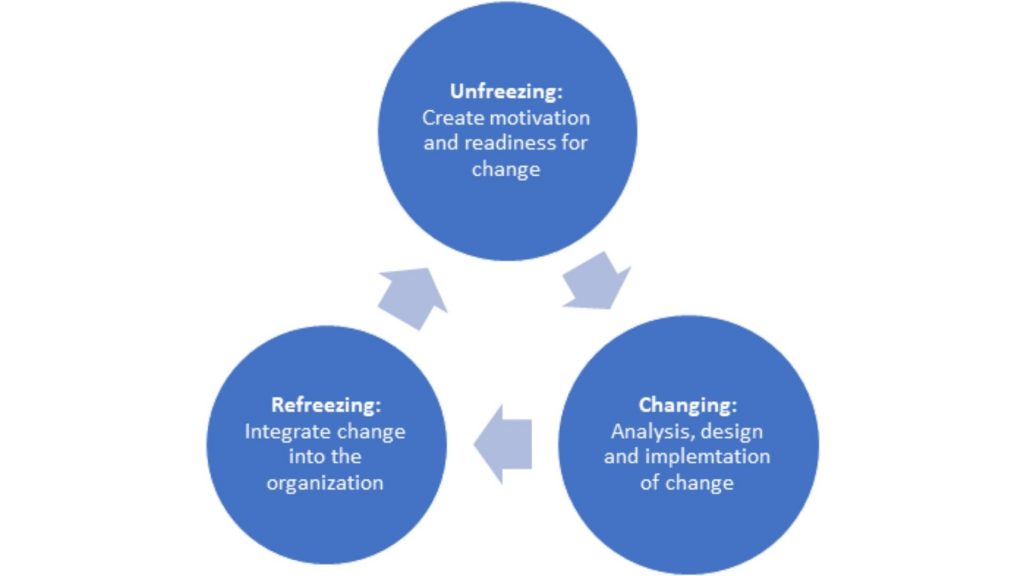- Mail:
- info@digital4pro.com
Change management: The Kurt Lewin model

Gli attacchi cyber agli impianti industriali
27 Ottobre 2020
Change management: Il modello di Kurt Lewin
28 Ottobre 2020According to Winston Churchill “a change does not always produce an improvement, but an improvement always requires a change”.
There are many models developed aimed at interpreting organizational change. One of the first models was developed by Kurt Lewin, a German psychologist, but also a scholar of communication and development of organizations.
Lewin’s model derives from biological theories of adaptation of organisms, which state how they adapt to the pressures of their environment and, when this happens over a prolonged period of time, they become resistant to any change that upsets the balance. reached up.

Figure 1 – Evolution of the change process according to Kurt Lewin.
According to Lewin, change in an organization can take place through three fundamental stages..
1 Unfreezing
the unfreezing of standards and structures is the first stage. This phase implies the creation, through good communication, of an awareness of the need for change, of a suitable climate and consequently of a widespread motivation for the individuals of the organization to be willing to change their own balance.
This phase aims at overcoming existing habits and resistances that will naturally arise. This is the most difficult phase because it involves the discomfort of giving up something to which one is attached. The loss threatens
the person’s image and involves being in a state of uncertainty and instability. Thawing, therefore, represents the pressure that induces the organism, which is itself resistant to change, to change. If this stage is not done properly, the change process can fail.
2 Changing
This is the stage where change is analyzed, designed and implemented. Necessary changes that may affect people, tasks, facilities and technologies are developed and implemented through a suitable strategy.
Managers need to spread positivity about change so that staff in turn respond equally positively. The willingness to listen and to provide clarifications is crucial.
3 Refreezing
This is the stage where change is analyzed, designed and implemented. Necessary changes, which may affect people, tasks, facilities and technologies, are developed and implemented through a suitable strategy.
Managers must spread positivity about change so that staff in turn respond equally positively. The willingness to listen and to provide clarification is crucial.
With the last phase, that of refreezing, change is made permanent through the integration of change factors into the new organizational culture. New habits are consolidated by incorporating new points of view both in the internal world of the person and in the relationships between the person and the main interlocutors, and a new organizational balance is recreated, with which individuals will be familiar.
Often, if you skip this phase, you run the risk of having ephemeral adhesions to new concepts and new opinions and you quickly retreat to the old modus operandi.
Bibliography:
- K. Lewin, Field Theory in social science, Harper & Row, New York, 1951.
- D. Pavoncello, Gestire il cambiamento in una situazione di crisi, Osservatorio Isfol n. 3/2012.




